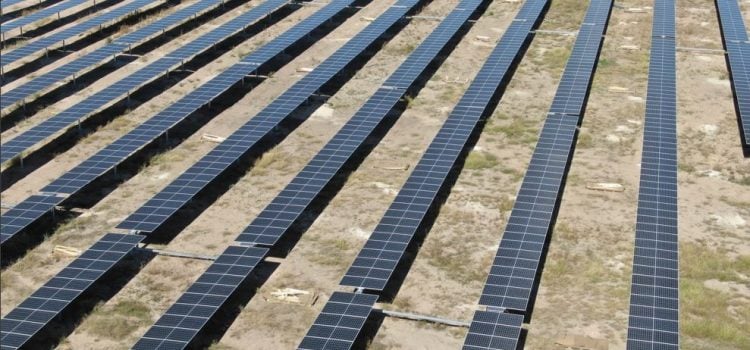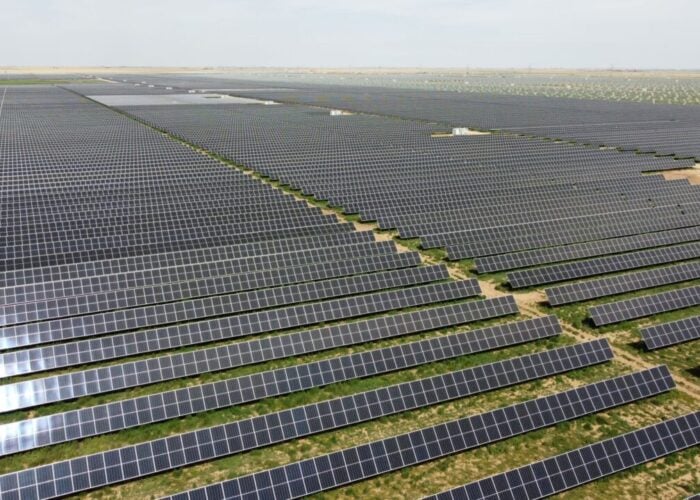
Australia’s Mount Isa City Council in Queensland has released an economic roadmap detailing that the region has some of eastern Australia’s highest potential for co-located solar and wind, with a possible generation capacity of over 26GW.
Specifically, the North West Minerals Province (NWMP) and Townsville corridor could offer Queensland, and likely wider Australia, the opportunity to develop large-scale renewable energy generation projects such as solar PV.
Unlock unlimited access for 12 whole months of distinctive global analysis
Photovoltaics International is now included.
- Regular insight and analysis of the industry’s biggest developments
- In-depth interviews with the industry’s leading figures
- Unlimited digital access to the PV Tech Power journal catalogue
- Unlimited digital access to the Photovoltaics International journal catalogue
- Access to more than 1,000 technical papers
- Discounts on Solar Media’s portfolio of events, in-person and virtual
Or continue reading this article for free
This could also have economic benefits for the nearby region, which is rich in minerals and mining operations. The Council’s report states that this electricity advantage can “power the extraction, processing and export of new economy minerals through setting up a decarbonised minerals mining and industrial manufacturing economy”.
Australia has one of the world’s largest mining industries, which has created an opportunity for the country to deploy solar PV and other renewable energy generation technologies to decarbonise its operations. Utilising this method is one step in the creation of a green metals value chain, something that could prove to be a huge economic opportunity for Australia in the future.
Indeed, this opportunity saw Australian mining giant Fortescue state last year that it aims to capitalise on China’s “insatiable demand for green products” through green metals extraction and exports, with hydrogen produced from solar PV and wind playing an important role.
In terms of direct decarbonisation of Australian mines using solar PV, most of the projects appear to be in the mining heartlands of Western Australia, the Pilbara region, and the Northern Territory. For example, Fortescue completed constructing a 100MW solar PV project at North Star Junction, Western Australia, in the 2024 financial year.
However, projects utilising solar PV at mines have appeared in the Northern Territory and New South Wales by Rio Tinto and Whitehaven Energy, a subsidiary of coal producer Whitehaven Coal, respectively.
Transitioning to renewable energy in Mount Isa
Despite a rich asset base, Mount Isa faces significant challenges due to its remoteness and dependence on a major employer – Glencore. The global natural resources company intends to wind down its underground copper operations in the region from mid-2025 and this could result in up to 1,200 jobs being lost.
As a result, the Council is identifying opportunities to diversify its workforce with renewable energy touted as a likely candidate.
Alongside solar PV generation, one likely opportunity is the repurposing of Glencore’s mines for an energy storage technology being designed by Green Gravity. The Australian startup penned a deal with the Mount Isa City Council to develop a 2GWh gravitational energy storage project in the region, as reported by our other site, Energy-Storage.news.
Green Gravity’s technology transforms legacy mineshafts into a base for its gravity-based energy storage technology. Due to the world-leading mining operations home to Australia, the technology could provide vast quantities of energy storage capacity to the country.
The technology’s potential attracted AU$9 million (US$6.02 million) in Series A capital funding earlier this month (15 October), which will be used to complete product development. Several investors, including HMC Capital, BlueScopeX, Pacific Channel and Sumisho Coal Australia Holdings, provided funding.
Following the studies, the parties will share insights from existing energy market analyses for the Northwest Queensland region, develop a model of the region’s energy dynamics, and identify funding requirements for subsequent studies into power quality and load profiles.
Incentivising investment in Mount Isa’s renewable energy sector
Decarbonising energy generation in the region will enhance Mount Isa’s energy sector by reducing reliance on liquefied natural gas (LNG) and enabling opportunities to decarbonise mining, processing and manufacturing, the Council claims. Mount Isa currently generates 20% of its energy from solar PV.
Establishing additional renewable energy generation in the region faces challenges such as connecting remote generation and demand sites to the grid, securing land access, obtaining offtake agreements and coordinating shifts in gas demand. To help stimulate investment, the Council has proposed several actions.
One includes publishing Mount Isa’s energy demand outlook to provide certainty to renewable energy developers. Another includes advocating for the establishment of a Renewable Energy Zone (REZ) to attract renewable investment and development.
The Council highlighted that REZ status offers benefits such as cost-effective and coordinated planning for the construction and connection of renewable energy and related infrastructure. It also enhances energy reliability, fosters ongoing community engagement and attracts investment.
Queensland’s REZ roadmap was published in March 2024 and identified 12 locations for REZs, which aim to add around 22GW of renewable energy capacity by 2035. A REZ is an area designated by state governments that aims to connect more efficiently to the grid with multi-gigawatts of renewable energy, such as solar PV and wind.
Last year, government-owned network operator Powerlink was selected to be the REZ Delivery Body.







